[Apollo 8] The first human-taken photograph of the whole Planet Earth. William Anders, 21–27 December 1968. Printed 1968–1969. Vintage chromogenic print on fiber-based Kodak paper [NASA image AS8–16-2593]. 20.3×25.4 cm (8×10 in), numbered “G-69–3710“ in black in bottom margin, with “A Kodak Paper” watermarks on the verso (NASA / Goddard Space Flight Center, Greenbelt, Maryland). Literature: LIFE, 10 January 1969, cover; National Geographic, May 1969, pg. 614; TIME, 10 January 1969, pg. 42; Space: A History of Space Exploration in Photographs, Chaikin, pg. 81; The View from Space: American Astronaut Photography, 1962–1972, Schick and Van Haaften, pg. 95; Apollo: Through the Eyes of the Astronauts, Jacobs, pg. 35; Images from Space, The Camera in Orbit, Arnold, cover. On Apollo 8 humankind truly left its Home Planet for the very first time. From the window of their spacecraft heading to the Moon, William Anders, James Lovell and Frank Borman became the first humans to witness the incredible view of the Earth as a sphere hanging in the dark void space. William Anders took this historic first human taken photograph of the whole Planet Earth four hours and 36 minutes after launch from a distance of about 27,000 km out in space with the Hasselblad 500EL equipped with the 80mm lens. [Original NASA caption for AS8–16-2593] A striking view from the Apollo 8 spacecraft showing nearly the entire Western Hemisphere, from the mouth of the St. Lawrence River, including nearby Newfoundland, extending to Tierra del Fuego at the southern tip of South America. Central America is clearly outlined. Nearly all of South America is covered by clouds, except the high Andes Mountain chain along the west coast. A small portion of the bulge of West Africa shows along the sunset terminator. On 25 December 1968 after a telecast from Apollo 8 the poet Archibald McLeish wrote these famous words in the The New York Times: “To see the Earth as it truly is, small and blue and beautiful in that eternal silence where it floats, is to see ourselves as riders on the Earth together, brothers on that bright loveliness in the eternal cold—brothers who know now they are truly brothers.” The photograph graced the cover of LIFE magazine (The incredible year 1968; January 10, 1969). From the mission transcript following translunar injection (photograph taken at T+004:36:00 after launch): 003:38:00 Lovell: Roger. Well, Mike, I can see the entire Earth now out of the center window. I can see Florida, Cuba, Central America, the whole northern half of Central America, in fact, all the way down through Argentina and down through Chile. 003:38:25 Collins (Mission Control): They picked a good day for it. [...] 004:06:36 Collins: How close to a radial burn can you get without losing sight of the S-IVB (booster), Frank? 004:06:41 Borman: Well, I don’t know because I can’t see the Earth now, Mike. [...] 004:06:51 Borman: We can pitch down some. Jim has the Earth in the optics so we could pitch some and get pretty close to one (a radial burn), I guess. [...] 004:17:11 Collins: Roger, Frank. You could help us out if you would explain where you are relative to the booster. In other words, with respect to the Earth and the radius back there, are you above or below or one side, or where exactly is the booster relative to you? 004:17:27 Borman: Well, it’s as I said before. We can’t definitely find the Earth. I think we are in front and a little bit above - a little bit above the - almost in front of the - directly in the front of the booster. [...] 004:36:00 Anders: Roger. If it will help you any, Mike, the Earth is plus-Y about 45 degrees in a minus-X. I can see it out my side window, and it’s a beautiful view with numerous cloud vortex. [...] 004:36:51 Anders: It’s behind us to the right, if that will help. 004:36:54 Collins: Roger. [Long pause.] 004:37:15 Borman: I can still see the Cape and isthmus of Central America. Condition Please notice: Additional illustrative material shown
Condition
[Apollo 8] The first human-taken photograph of the whole Planet Earth. William Anders, 21–27 December 1968. Printed 1968–1969. Vintage chromogenic print on fiber-based Kodak paper [NASA image AS8–16-2593]. 20.3×25.4 cm (8×10 in), numbered “G-69–3710“ in black in bottom margin, with “A Kodak Paper” watermarks on the verso (NASA / Goddard Space Flight Center, Greenbelt, Maryland). Literature: LIFE, 10 January 1969, cover; National Geographic, May 1969, pg. 614; TIME, 10 January 1969, pg. 42; Space: A History of Space Exploration in Photographs, Chaikin, pg. 81; The View from Space: American Astronaut Photography, 1962–1972, Schick and Van Haaften, pg. 95; Apollo: Through the Eyes of the Astronauts, Jacobs, pg. 35; Images from Space, The Camera in Orbit, Arnold, cover. On Apollo 8 humankind truly left its Home Planet for the very first time. From the window of their spacecraft heading to the Moon, William Anders, James Lovell and Frank Borman became the first humans to witness the incredible view of the Earth as a sphere hanging in the dark void space. William Anders took this historic first human taken photograph of the whole Planet Earth four hours and 36 minutes after launch from a distance of about 27,000 km out in space with the Hasselblad 500EL equipped with the 80mm lens. [Original NASA caption for AS8–16-2593] A striking view from the Apollo 8 spacecraft showing nearly the entire Western Hemisphere, from the mouth of the St. Lawrence River, including nearby Newfoundland, extending to Tierra del Fuego at the southern tip of South America. Central America is clearly outlined. Nearly all of South America is covered by clouds, except the high Andes Mountain chain along the west coast. A small portion of the bulge of West Africa shows along the sunset terminator. On 25 December 1968 after a telecast from Apollo 8 the poet Archibald McLeish wrote these famous words in the The New York Times: “To see the Earth as it truly is, small and blue and beautiful in that eternal silence where it floats, is to see ourselves as riders on the Earth together, brothers on that bright loveliness in the eternal cold—brothers who know now they are truly brothers.” The photograph graced the cover of LIFE magazine (The incredible year 1968; January 10, 1969). From the mission transcript following translunar injection (photograph taken at T+004:36:00 after launch): 003:38:00 Lovell: Roger. Well, Mike, I can see the entire Earth now out of the center window. I can see Florida, Cuba, Central America, the whole northern half of Central America, in fact, all the way down through Argentina and down through Chile. 003:38:25 Collins (Mission Control): They picked a good day for it. [...] 004:06:36 Collins: How close to a radial burn can you get without losing sight of the S-IVB (booster), Frank? 004:06:41 Borman: Well, I don’t know because I can’t see the Earth now, Mike. [...] 004:06:51 Borman: We can pitch down some. Jim has the Earth in the optics so we could pitch some and get pretty close to one (a radial burn), I guess. [...] 004:17:11 Collins: Roger, Frank. You could help us out if you would explain where you are relative to the booster. In other words, with respect to the Earth and the radius back there, are you above or below or one side, or where exactly is the booster relative to you? 004:17:27 Borman: Well, it’s as I said before. We can’t definitely find the Earth. I think we are in front and a little bit above - a little bit above the - almost in front of the - directly in the front of the booster. [...] 004:36:00 Anders: Roger. If it will help you any, Mike, the Earth is plus-Y about 45 degrees in a minus-X. I can see it out my side window, and it’s a beautiful view with numerous cloud vortex. [...] 004:36:51 Anders: It’s behind us to the right, if that will help. 004:36:54 Collins: Roger. [Long pause.] 004:37:15 Borman: I can still see the Cape and isthmus of Central America. Condition Please notice: Additional illustrative material shown
Condition
.jpg)
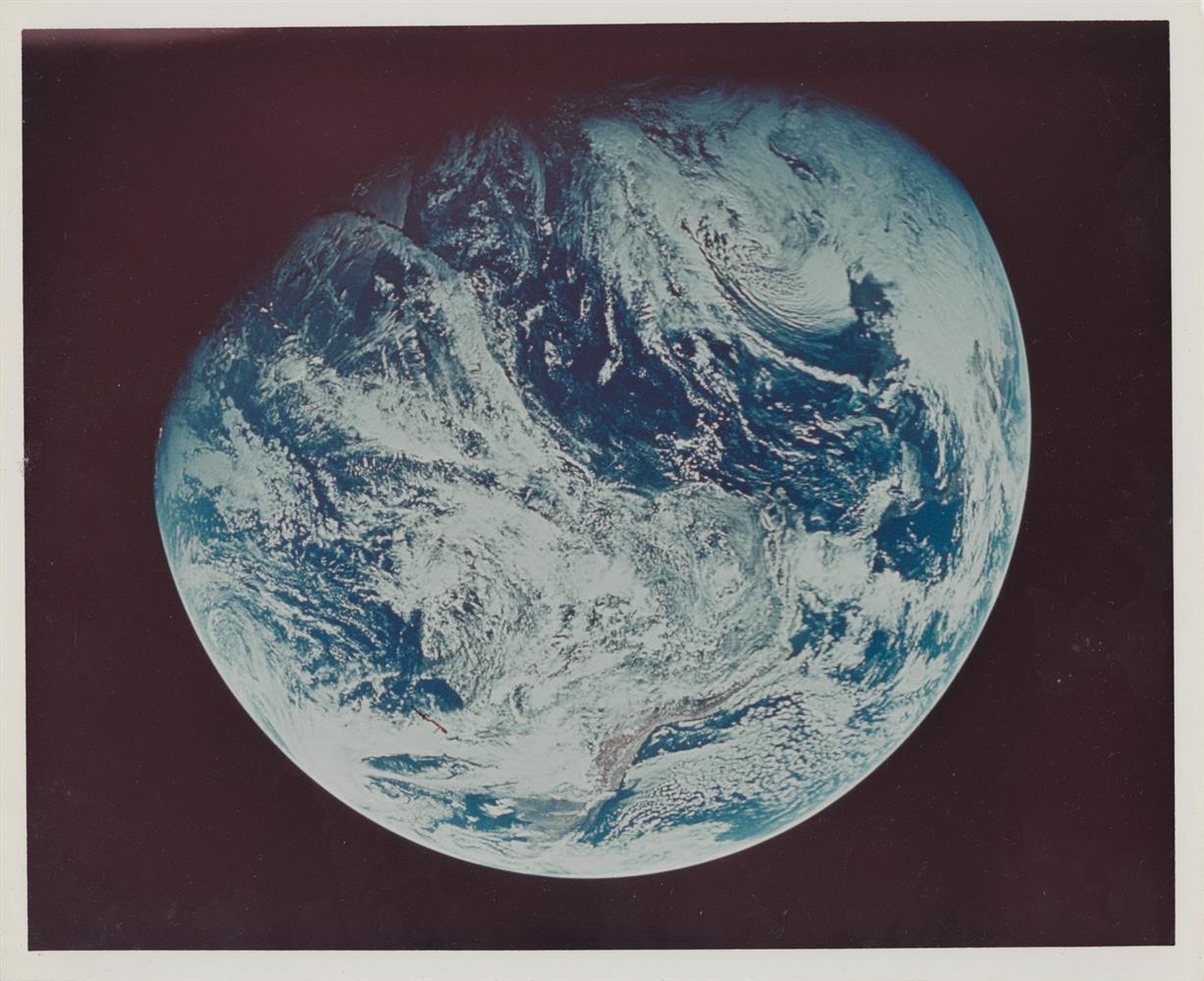

.jpg)
.jpg)
.jpg)
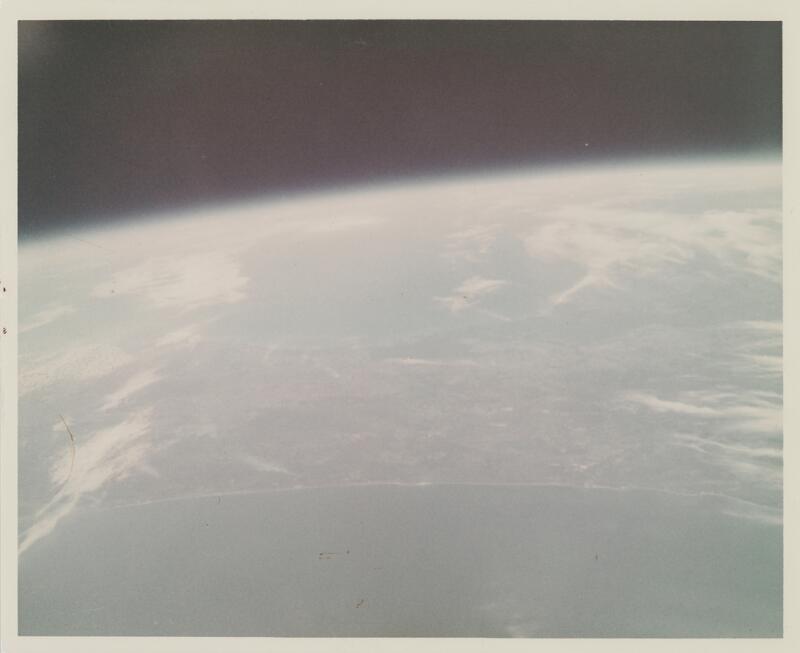

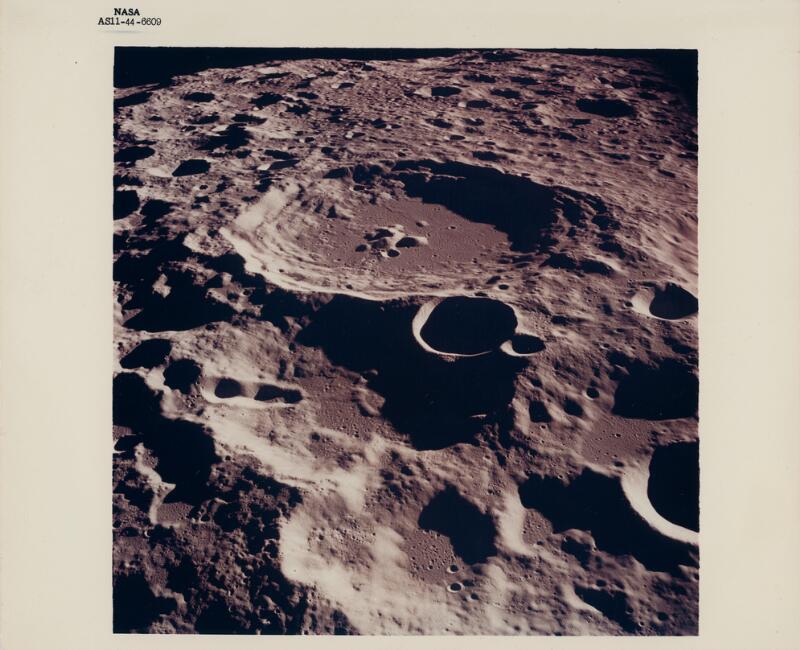
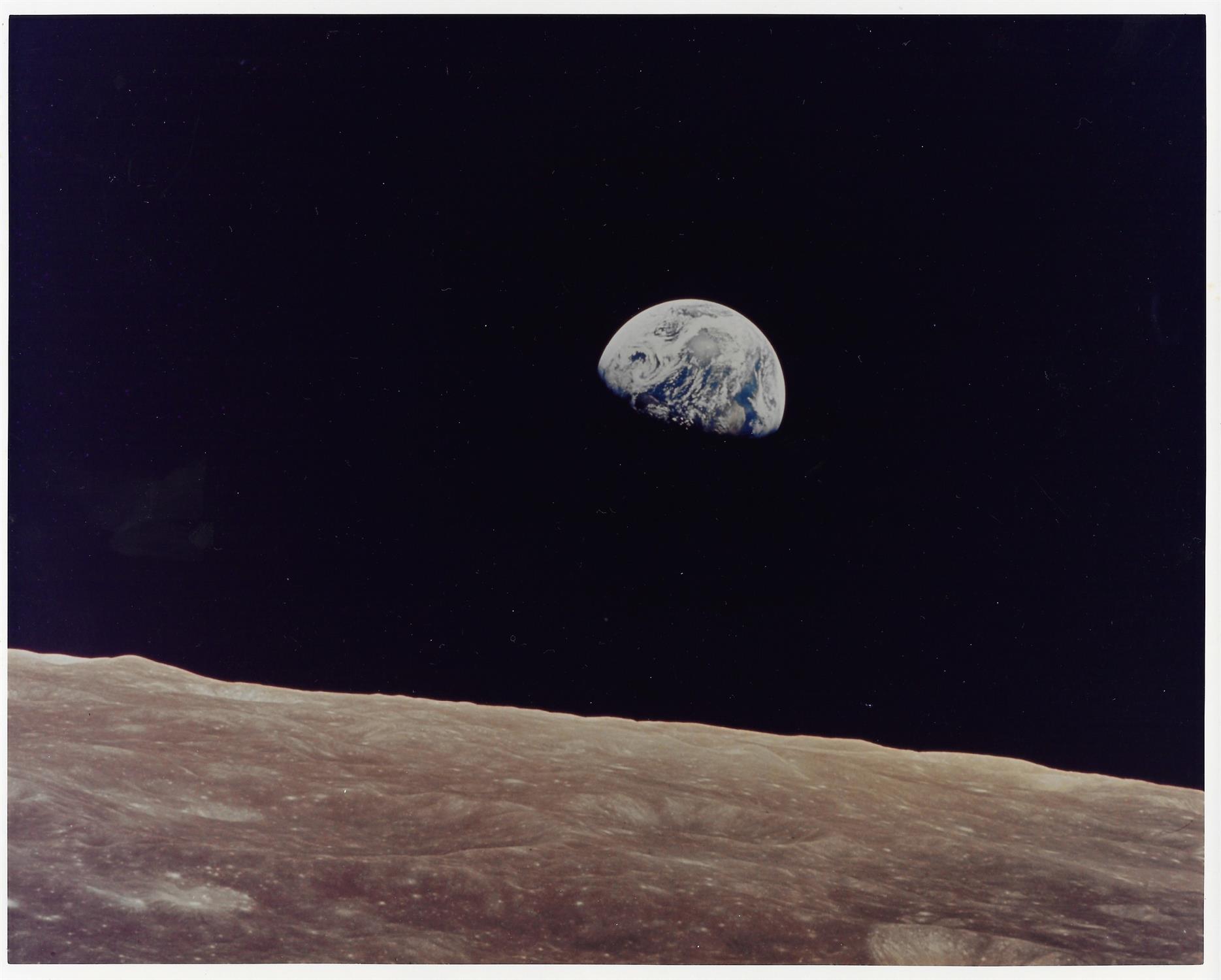
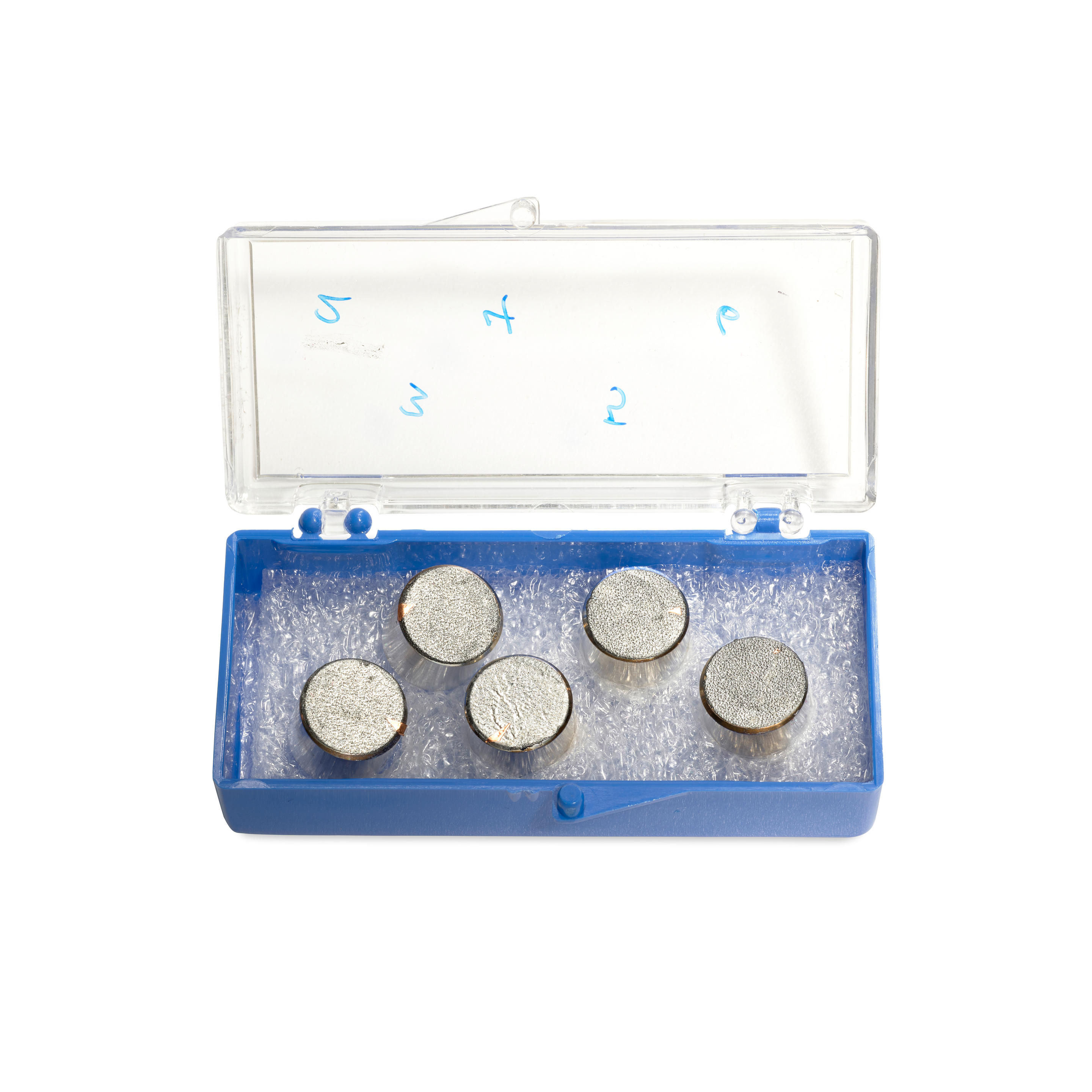
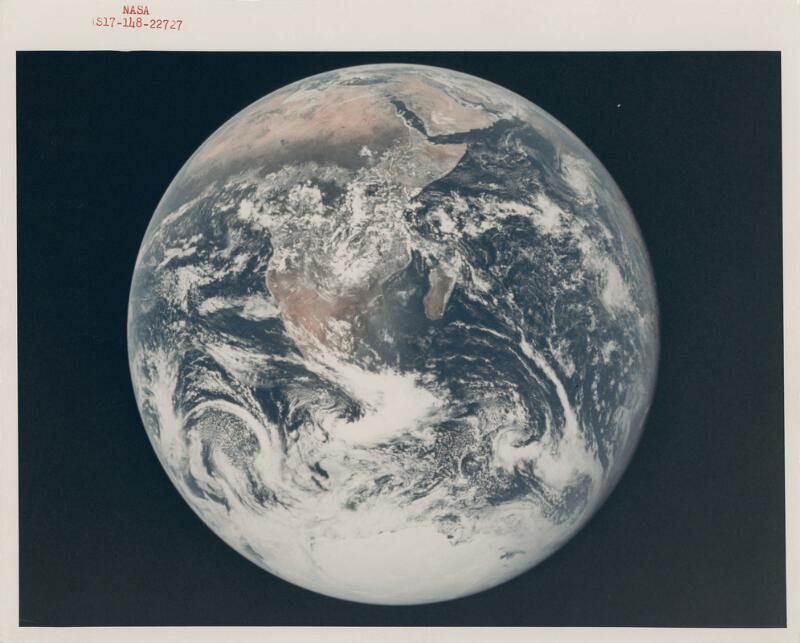
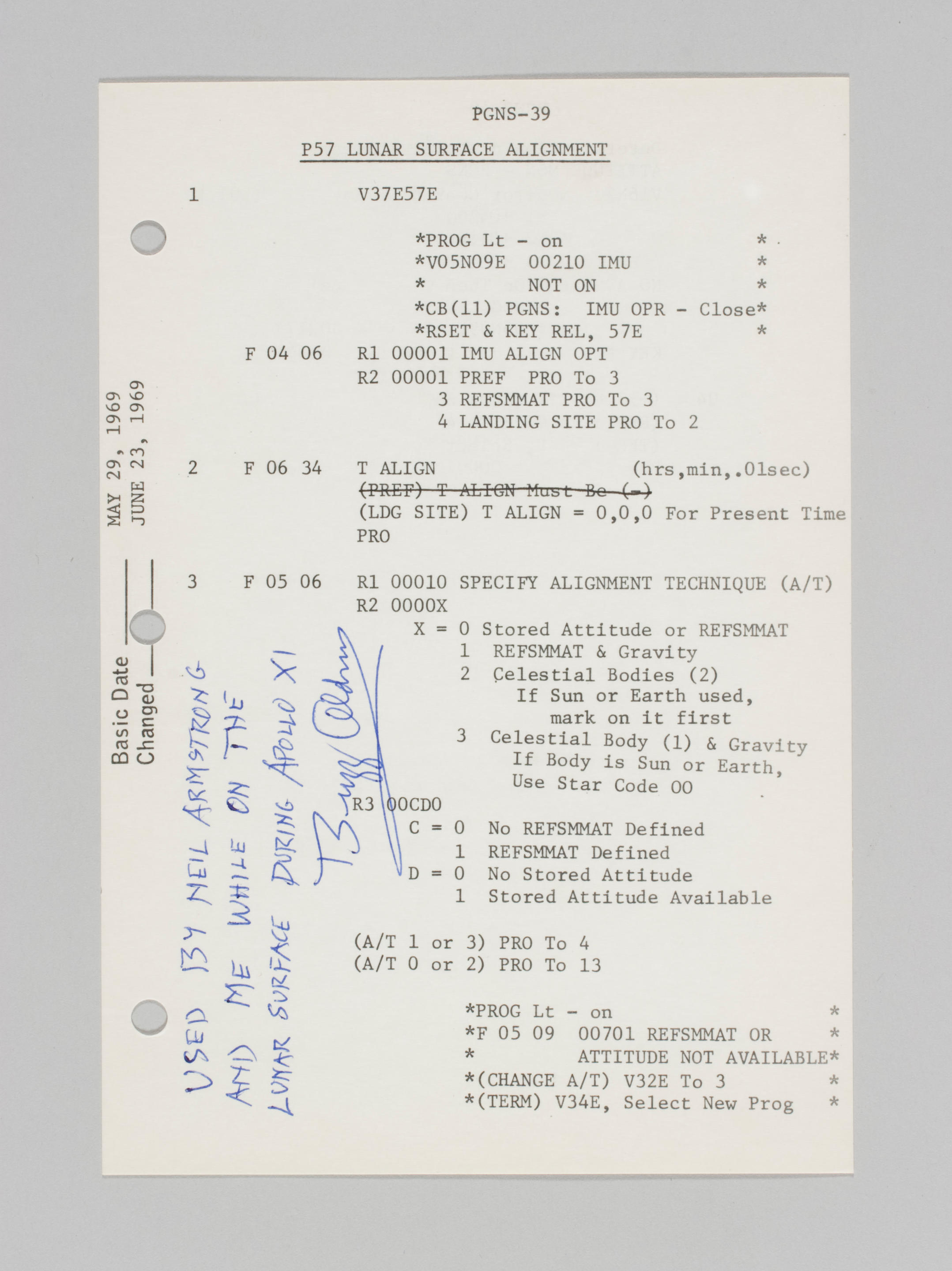
.jpg)
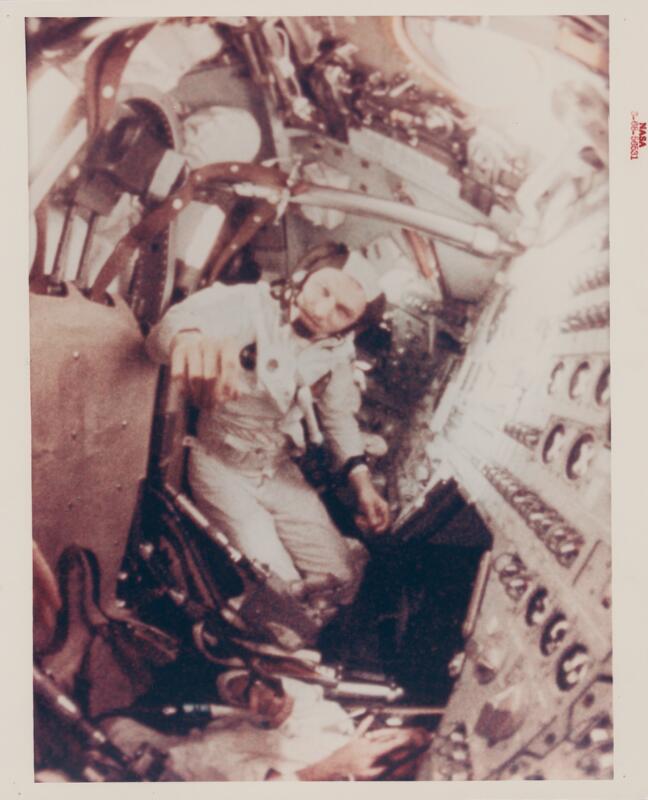
Try LotSearch and its premium features for 7 days - without any costs!
Be notified automatically about new items in upcoming auctions.
Create an alert